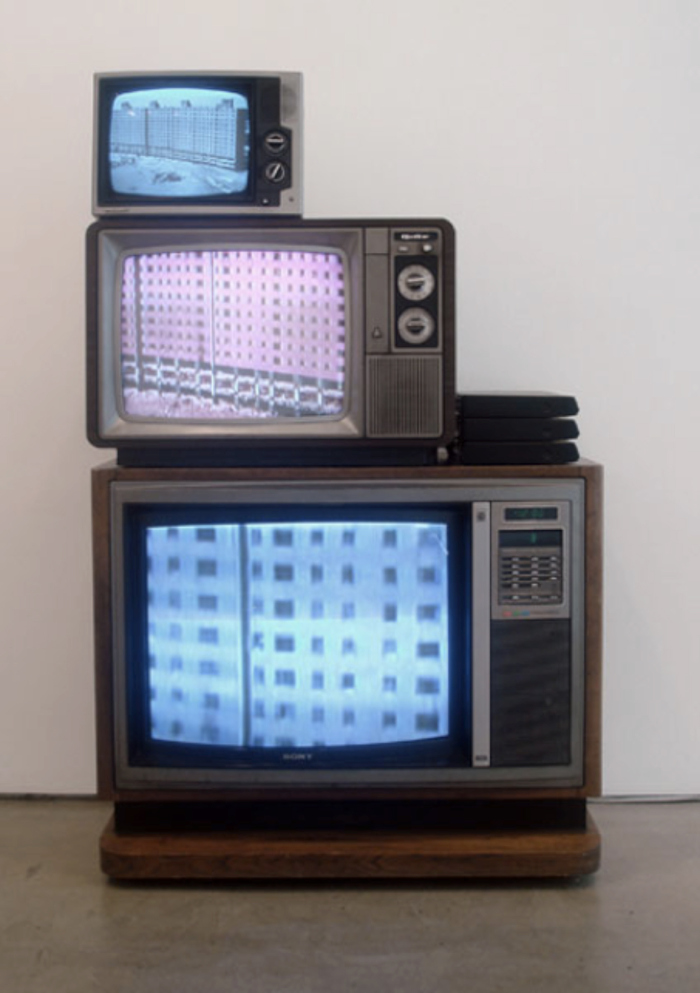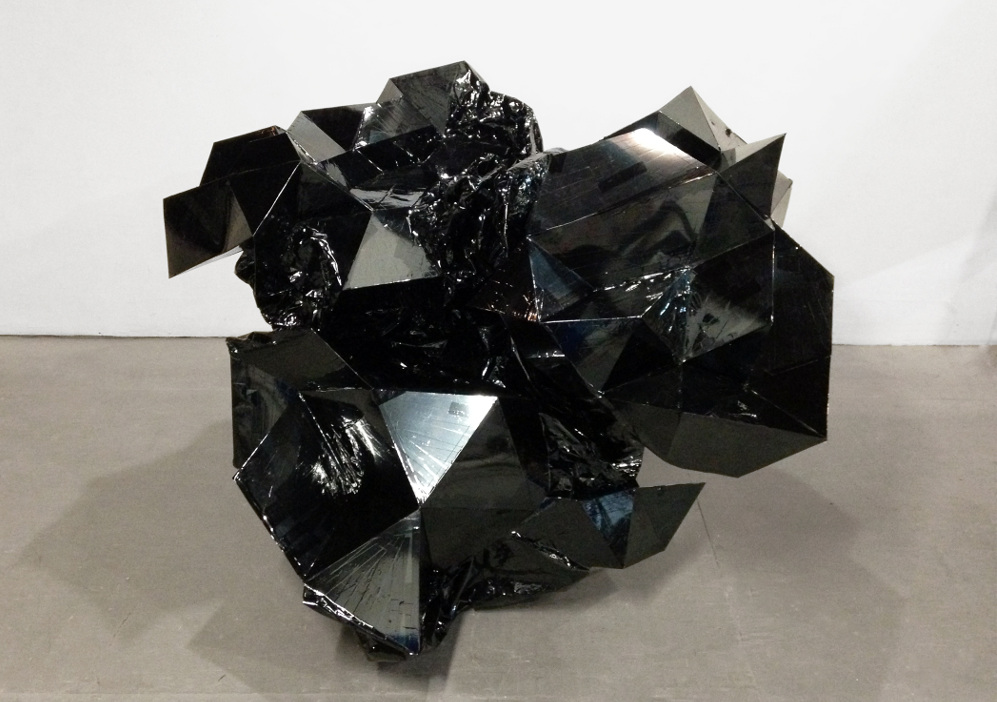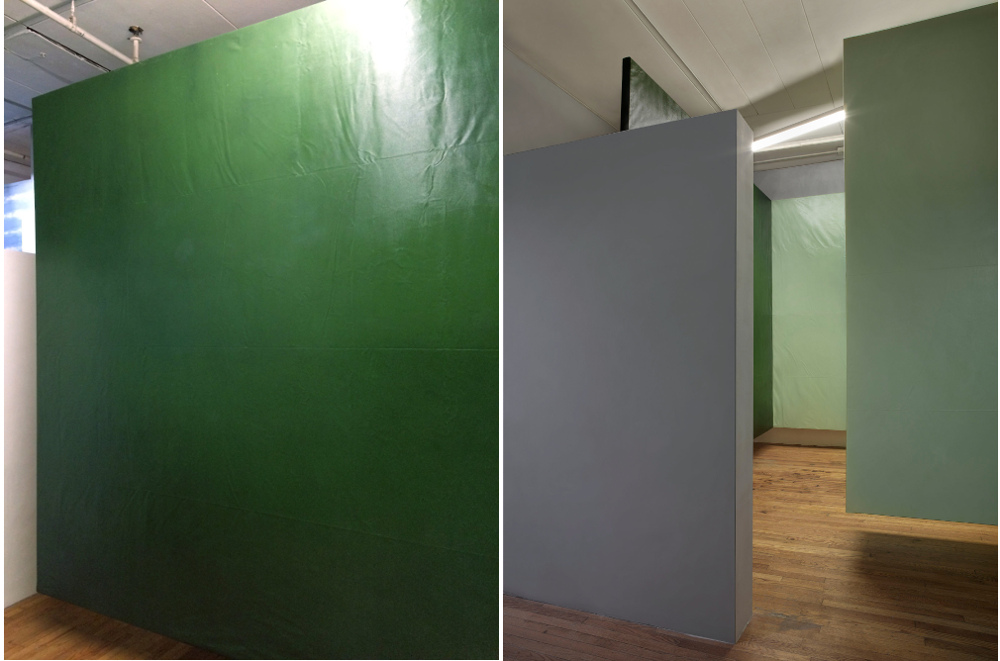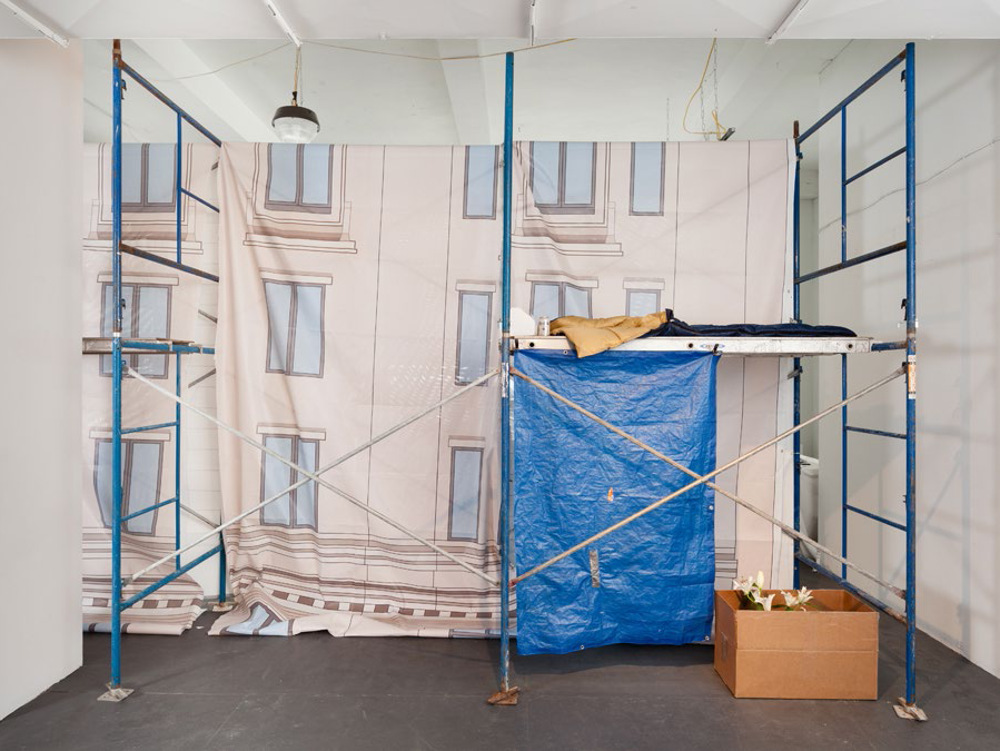In the second instalment of a three-part series, William Kherbek examines the New York art attempting to seek out responses to urban space

At this year’s Pulse Art Fair in New York, one of the special project pieces was a video work by Jonathan Calm entitled Scudder Towers Down, comprised of slow-motion video footage of the controlled implosion of a housing estate. Watching it, I couldn’t help but be reminded of the episode of the HBO drama The Wire in which a hated housing development is demolished to the cheers of residents.
Once upon a not-very-long-ago time, starry eyed and socially aware architects planned utopian projects in which communities would not simply dwell, but where they would have all the conveniences of modern life, shopping, laundry, recreation and green space. What went so wrong that these projects ended up becoming a byword for deprivation, disenfranchisement, and, as many notorious estates in the US and UK attest, found associations with violence? The answer, it seems, lies not in our star architects, but in ourselves. Something such utopians didn’t appear to count on was how little human nature was likely to change just because it was housed differently. Indeed, few stopped to consider the resemblance of such projects to another well-known example of architecture wherein all of a person’s needs are met by the state: prisons.
The tendency of human beings to exclude, to create hierarchies, and to put problems out of sight so that they can slowly fade out of mind, is now impossible to ignore. New York, which is facing a housing crisis that rivals the problems of London, presents one of the great crises/opportunities available to artists concerned with examining the contemporary urban condition.
A show at New York’s Gagosian Gallery brings together works by the late sculptor, John Chamberlain, and French industrial designer, Jean Prouve, and looks back to the ‘good old days’ of better living through urban planning. Chamberlain’s twisted metallic totems served as an elegant counterpoint to astonishing Prouve creations like the Villejuif Demountable House – a construction originally intended to create an IKEA-style ready-to-assemble schoolhouse.
In many ways, Prouve’s vision is completely distinct from the fixity of housing projects like those shown inScudder Towers Down. The optimism his work embodies feels equally distant from the contemporary urban political discourse, so there’s a winsomeness inscribed in such works that Prouve, the clear-eyed solution seeker, would probably have hated. But, history seldom confers the legacy an artist seeks for their work.

In Beyond 1.1, an exhibition currently running at New York’s Tanja Grunert Gallery, Charlotte Becket’s Curdle suggets mobility was not conceived as the prerogative of the city, nor its residents. Becket’s work, a kind of kinetic sculpture of geometric forms, was not a million miles from something Toby Ziegler would do. It is something like a geometer’s nightmare, a multisided automated black mass, reshaping itself in a corner of the room as a motor whirs noisily away: part boulder, part trash-monster. Humourous, yes, but also deeply evocative of a conurbation where refuse always seems to be taking over. It invoked the character of New York’s downtown scene of the 1970s – a marriage of the low-fi and sci-fi sensibilities of Gordon Matta-Clark and Robert Smithson.
“I am interested in the slippage between place and experience, and the collapsing boundary between tangible physicality and hallucinogenic perception,” Becket told me, reiterating the importance of geography in the structuring and conception of her piece. “Geographic structures speak to temporality, mutation, beauty and violence and are totally indifferent to our existence,” she added. “We impact our environment, but it always finds its equilibrium, even if we can no longer survive in the circumstances we’ve created.”
“We impact our environment, but it always finds its equilibrium, even if we can no longer survive in the circumstances we’ve created.”

Space is at a premium in New York, and in Manhattan in particular. Over the river in Brooklyn,
The panels were varying shades of green, greens Neuerer encountered in public spaces from billboards, adverts and the like, many for health products or services. Neuerer’s literal green room had the ominous insinuation that everything’s supposed to be good for you and was both eerily calm yet menacing – do something healthy or else, it hinted. The emerald shades were anything but organic, yet they had an ecology of their own; the smooth and rough melding of various hues against one another seemed to generate a palpable physical tension.

The work of the city itself was a key feature of Sebastian Lloyd Rees’ exhibition Vendor at Room East in Manhattan’s Lower East Side. Vendor could be thought of as a material haiku composed of the ephemera and efflorescence of urban life, including shipping boxes, lottery tickets, flyers, shop adverts, all presented in a deliberate but deadpan fashion, veering just on the right side of pretension masquerading as anti-pretension.
The weathered hoardings in the upstairs gallery behaved like a simultaneous manifestation and critique of the ‘found object’ culture that a lot of post-recession art embraces. In their deformations and discolourations caused by urban pummeling – from both humans and mother nature – the hoardings espouse a terse eloquence that, in being presented without comment or artistic manipulation, only grows with attention.




